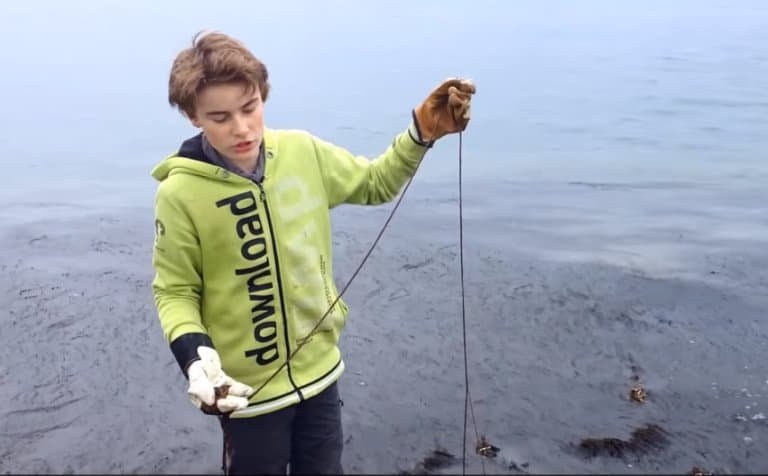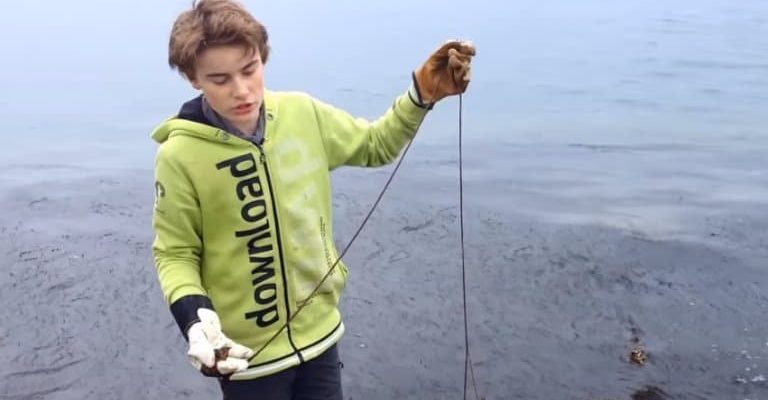
Imagine you’re at the beach, and a storm rolls in, the sky darkening and the sea churning. Just like how we might seek shelter, bootlace worms have their unique ways of reacting to these environmental changes. They aren’t just passive residents of the sea; they actively respond to the sensations of their watery world. Let me explain how these incredible creatures navigate the challenges of storm surges and why it matters for the marine environment.
What Are Bootlace Worms?
Bootlace worms are fascinating creatures that belong to the phylum Nemertea. They’re often called ribbon worms due to their long, slender bodies that can extend up to 30 meters—yes, you read that right! While they might look like strands of spaghetti, they’re far more complex and play a crucial role in their ecosystem. Found mostly in shallow waters along shorelines, these worms have a soft, flexible body and can vary in color, often sporting shades of brown, green, or even bright hues.
One interesting thing about bootlace worms is how they move through their environment. They use a unique method, contracting their bodies to glide along the ocean floor or burrow into the sand. This ability is key to understanding their behavior during turbulent conditions like storm surges.
How Storm Surges Affect Coastal Ecology
Storm surges are not just a matter of rising water levels; they can drastically change the coastal landscape. Winds and waves can reshape shorelines, uprooting plants and transporting sediment. This alteration creates opportunities and challenges for marine life. For bootlace worms, these changes can either disrupt their habitat or offer new places to thrive.
During a storm surge, the increase in water movement can affect the oxygen levels in the surrounding water. It’s not uncommon for marine organisms, including bootlace worms, to be displaced or even stressed due to the tumultuous conditions. Understanding how these worms adapt to such changes gives us a better perspective on the resilience of marine life in the face of climate change and extreme weather events.
Bootlace Worm Behavior During Storm Surges
So, how exactly do bootlace worms behave when a storm surge hits? One notable response is their tendency to burrow deeper into the substrate. While they usually live just beneath the surface, the turbulence caused by strong waves and currents motivates them to find more stable ground—literally. This behavior is crucial for their survival, as it protects them from being washed away or exposed to predators.
Additionally, bootlace worms have a remarkable ability to detect changes in their environment. They have specialized sensory cells that alert them to shifts in water pressure and temperature. When a storm is approaching, these cues signal the worms to prepare for the changes. You might even say they have an instinctual “storm radar.” This proactive behavior enhances their chances of survival when conditions worsen.
The Role of Bootlace Worms in Their Ecosystem
Bootlace worms are more than just survivors during storm surges; they play an essential role in the coastal ecosystem. As predators, they feed on small marine creatures, including crustaceans and other worms. This predatory behavior helps maintain the balance of the ecosystem, preventing overpopulation of certain species.
Moreover, bootlace worms contribute to the nutrient cycling in their environment. By breaking down organic matter, they help recycle nutrients that other marine organisms can use. This process is vital for the overall health of the marine ecosystem, especially after a storm when nutrients may become more available due to the redistribution of sediments.
Adaptations of Bootlace Worms to Survive Storms
You might be wondering, “What adaptations make bootlace worms capable of surviving such harsh conditions?” Besides their burrowing behavior, they possess a unique ability to regenerate. If a worm is damaged during a storm, it can often heal itself quite effectively. This regeneration ability allows them to bounce back from injuries that might occur during turbulent weather.
Additionally, the mucus they secrete serves multiple purposes. It helps them move easily through sand and protects their bodies from abrasions. During a storm surge, this mucus can also provide a layer of insulation, which is crucial when they are buried beneath shifting sands or turbulent waters.
Impacts of Climate Change on Bootlace Worm Behavior
As climate change continues to influence weather patterns, storm surges may become more frequent and severe. This leads to questions about how bootlace worms and their ecological roles will be affected long-term. The increased frequency of storms could alter the habitats where they thrive and impact their food sources and overall population dynamics.
Researchers are beginning to study these changes closely. If bootlace worms are unable to adapt to new conditions or if their habitats are significantly altered, it might cause ripple effects throughout the ecosystem. This is why understanding their behavior during storm surges is essential not just for their survival, but for the health of our oceans as a whole.
The behavior of bootlace worms during storm surges is a perfect example of nature’s resilience and adaptability. These creatures remind us that every part of an ecosystem plays a role in maintaining balance—even the ones that seem small or insignificant. By studying their reactions to storm surges, we gain insights into the health of coastal ecosystems and the impacts of climate change.
Next time you hear about storm surges, think about the bootlace worms beneath the waves, adapting, surviving, and thriving. Their existence is not only a testament to the power of nature but also to the importance of preserving our coastal environments for future generations.

